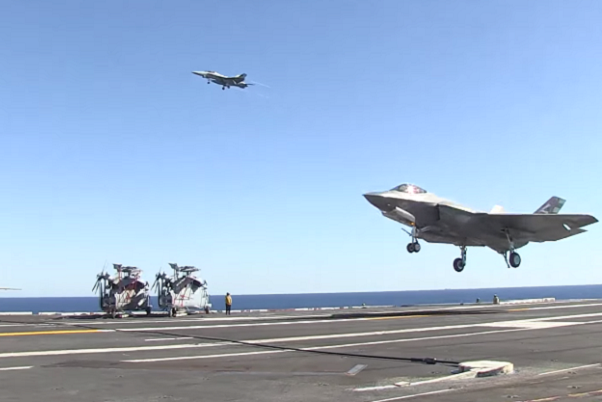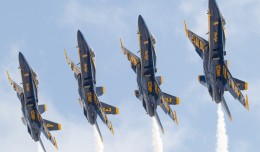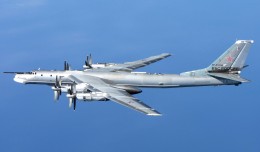With the increase in power of Chinese and Russian air forces, the U.S. Air Force has been formulating strategies to raise their power even further. It has been too long since the Pentagon and Lockheed Martin started working on their ultimate fighter aircraft F-35 Lightning II. Although the Joint Strike Fighter (JSF) program is three years behind its original schedule but the F-35 is getting developed quite well and will prove to be an efficient weapon in the arsenal of U.S. Air Force.
F-35: A costly burden or a boon in disguise?
There are lots of controversies regarding the cost of the F-35 aircraft. In development since 2001, Lockheed Martin engineers have faced several technical glitches that have continually delayed the project’s progress. It is being rumored that the Pentagon has already invested over $1 trillion in the F-35’s development and once the program is finished the most advanced fighter jet in the world will cost almost $1.5 trillion for the U.S. Armed Forces. Once it is declared ready for use by the Air Force, as well as the Navy and Marine Corps who will also be receiving their won variants, the F-35 will be the most expensive fighter aircraft project the world has ever seen.
Irrespective of its cost, the aircraft’s developers claim the F-35 will bring more efficiency to the USAF. The F-35 and its variants that are being developed under the JSF program will be highly efficient in air to air and air to air combat as well as in the surveillance; intelligence and reconnaissance missions. The aircraft is well equipped with the most advanced radar jamming capabilities; stealth abilities; supersonic speed; magnificent sensor fusion technology and superior agility. In addition the fighter is being designed to have uncommon versatility, with variants being produced for the Navy and Marine Corps that are expected to be delivered soon.
Having said all that, the development of this fifth generation air fighter has faced several criticisms due to the unfathomable cost of its production. Even President Donald Trump has expressed his hostile opinions on the cost of development of Lockheed Martin’s next generation fighter. But the US Government is not paying much heed to the criticisms as they are hell bent on stabilizing the power in the Air Force after the steep increase in the power curve of the air forces of China and Russia.
However the problem that political and financial observers have been highlighting is the huge sum of money being invested in the JSF program that has become a burden upon the U.S. Government. The cost of development of the F-35 and its variants under the JSF project has been estimated as $1.5 trillion which has led to vocal opposition by many concerned U.S. citizens and elected officials. But there are several misconceptions regarding the investment on the project which the media of United States chooses not to share with the public. For instance, the $1.5 trillion sum that needs to be invested for the development and maintenance of F-35s is the total project investment that the U.S. government has until would need be paid off in in 2070 to complete payment. This important fact has not yet surfaced in any news reports related to the aircraft.
To further add to the controversy, the F-35 has faced several technical glitches that have delayed the project and inflated the cost to an even higher level. From the inefficient use of energy to being unable to outsmart the F-16 in close combat to control difficulties, Lockheed Martin has been facing it all.. Moreover, the $400,000 helmets that have been developed for the F-35 pilots have also faced several problems in their inner circuitry leading to the helmets being unable to distinguish between friends and foes. These problems have been sorted out and the fighters will be soon handed over to the Air Force, Navy and Marine Corps for entry into active service.
The Future of the F-35:
The F-35 Lightning II and the JSF program have always been a favorite topic for critics due to the high cost of development and technical issues. With so many criticisms about the development of the fighter jet, officials from U.S. government and Lockheed Martin have evaluated the JSF program. According to their report, production cost is expected to be reduced significantly. Officials have concluded that once the aircraft is combat ready, the price will drop to $85 million per jet, which is almost the same as that of the F-16 . It is also expected that by 2019-2020 the price will drop even further as production accelerates. Thus, by 2020 the U.S. Air Force, U.S. Navy and U.S. Marine Corps will be able to procure the F-35s at a price much lower than the cost of any fourth generation fighter aircraft.
Every project requires time and investment; the F-35 Joint Strike Fighter program is not an exception to that. But once the jets are getting combat ready, not only will the price i drop but the U.S. Air Force will own the most lethal and destructive fighter aircraft that the world has ever seen. No matter how much difficulty the developers are facing, in my opinion, the F-35 program is totally worth investing on since it is too important to maintain the balance of power in favor of the United States Air Force.
Larkins Dsouza, Founder of Defence Aviation. He hosts the Defence Aviation Podcast where he talks to pilots, analysts, business executives etc in the aerospace/defence industry.







